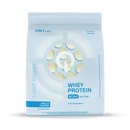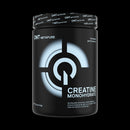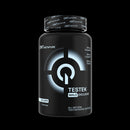Table of Contents
Losing weight after 40 can be a challenge, but understanding key factors such as hormonal changes and metabolism is essential. Discover the best exercises, dietary adjustments, and how sleep and supplements can help. Don’t get discouraged; our article offers practical and tailored advice to help you achieve your goals.
WHY IS IT HARDER TO LOSE WEIGHT AFTER 40?
After 40, many physiological and hormonal changes can make weight loss more difficult than at a younger age. Several factors explain this phenomenon.
1. Slower metabolism.
The metabolism, which is the body's ability to burn calories for energy, naturally slows down with age. This means the body burns fewer calories at rest than it did in your twenties or thirties. At 40, maintaining or losing weight therefore requires more effort in terms of physical activity and managing calorie intake.
2. Reduction in muscle mass.
As we age, there is also a gradual decrease in muscle mass, called sarcopenia. Muscles are highly energy-consuming tissues, meaning they burn more calories, even at rest. With less muscle mass, the body naturally expends less energy, making weight loss more difficult.
3. Hormonal changes.
In women, perimenopause and menopause lead to significant hormonal fluctuations, particularly a decrease in estrogen levels, which can result in increased fat storage, especially around the abdomen. In men, a gradual decline in testosterone levels can also contribute to weight gain and loss of muscle mass.
4. Lifestyle habits and stress.
With age, professional, family, and personal responsibilities can increase, leading to higher stress levels. Chronic stress can lead to an overproduction of cortisol, a hormone that promotes fat storage, particularly in the abdominal area. Additionally, poor eating habits related to a hectic lifestyle can become ingrained over time, making weight management even more challenging.
5. Less physical activity.
At 40 and beyond, professional and family obligations can limit the time available for regular physical activity. Sedentary habits, combined with a slower metabolism, can lead to faster weight gain and make losing weight more complicated.
How to overcome these challenges?
To counter these effects, it is essential to readjust your habits. Increasing physical activity, particularly strength training exercises, can help maintain muscle mass and speed up metabolism. On the dietary side, it may be beneficial to prioritize foods rich in protein and fiber, while reducing sugar and saturated fat intake. Lastly, managing stress and ensuring quality sleep are also key factors in promoting weight loss after 40.
In summary, although losing weight after 40 is more challenging, it is entirely possible with appropriate adjustments in lifestyle habits.
HOW DO HORMONAL CHANGES AFFECT WEIGHT LOSS AFTER 40 YEARS OLD?
Hormonal changes play a key role in the difficulty of losing weight after 40, for both men and women. These hormonal variations influence fat management, metabolism, and body weight distribution, making weight loss more complex.
1. Hormonal changes in women.
In women, perimenopause, which usually begins in their forties, leads to a gradual decline in estrogen levels. This reduction continues with menopause, often around their fifties. Estrogen plays an important role in regulating fat distribution in the body. When levels drop, the body's tendency to store fat, particularly in the abdominal area, increases.
This accumulation of visceral fat, which surrounds internal organs, is not only unappealing but is also associated with increased risks of metabolic diseases like type 2 diabetes and heart disease. This change in fat distribution can complicate weight loss, even in women who maintain a balanced diet and regular physical activity.
2. Hormonal changes in men.
In men, starting in their forties, testosterone levels begin to gradually decrease. Testosterone is a crucial hormone for maintaining muscle mass and managing weight. With this decline, there is often a loss of muscle mass, which reduces the body's ability to burn calories efficiently. This can lead to an increase in fat mass, particularly around the abdomen.
Another effect of the decrease in testosterone is a reduction in motivation to engage in regular physical activities, further exacerbating weight gain.
3. Insulin resistance.
With age, it also becomes more common to develop insulin resistance, especially due to hormonal fluctuations. Insulin is a hormone responsible for controlling blood sugar levels. When the body becomes less sensitive to insulin, it tends to store fat more easily. This phenomenon can slow down weight loss efforts and increase the risk of developing metabolic disorders.
4. Cortisol and stress.
Stress, often more prevalent after 40 due to increased responsibilities, can also disrupt hormonal balance, particularly by raising cortisol levels, the stress hormone. High cortisol levels are associated with weight gain, especially in the abdominal area. It also promotes cravings for sugary and fatty foods, which can counteract weight loss efforts.
How to counter the effects of hormonal changes?
To minimize the impact of hormonal changes on weight loss, it is crucial to adopt a holistic approach. Resistance training, such as weightlifting, can help maintain muscle mass, thereby promoting a more active metabolism. A balanced diet, rich in protein, fiber, and healthy fats, can also help regulate blood sugar levels and limit insulin resistance.
It is also recommended to manage stress through relaxation techniques such as meditation, yoga, or activities that promote relaxation. Lastly, consulting a healthcare professional to assess hormone levels and consider appropriate treatments, such as hormone therapy or supplements, may be an option to consider.
Therefore, although hormonal changes after 40 make weight loss more challenging, they can be managed with adapted strategies, both physically and mentally.
WHAT ARE THE BEST EXERCISES FOR WEIGHT LOSS AFTER 40?
After 40, the body undergoes physiological changes that make weight loss more challenging, such as a slower metabolism and loss of muscle mass. To optimize weight loss at this age, it is essential to combine different forms of exercise that boost metabolism, preserve muscle mass, and promote cardiovascular health. Here are the most effective types of exercises for losing weight after 40.
1. Resistance training (strength training).
Resistance training, also known as strength training or muscle strengthening, is one of the best ways to combat age-related muscle loss. Building and maintaining muscle mass is essential for boosting metabolism, as muscles burn more calories at rest than fat. By strengthening your muscles, you increase your overall energy expenditure, making weight loss easier.
Exercises like squats, lunges, deadlifts, and push-ups are particularly beneficial because they engage multiple muscle groups at once. It is recommended to do strength training sessions two to three times per week, focusing on major muscle groups.
However, for those already accustomed to weightlifting, training more frequently can be beneficial, and working out five times a week can be a good routine.
2. High-Intensity Interval Training (HIIT).
HIIT (High-Intensity Interval Training) is a workout method that alternates periods of intense effort with active recovery periods. This approach is ideal for weight loss after 40, as it allows you to burn a significant number of calories in a short time and boosts metabolism long after the workout is over, known as the afterburn effect.
HIIT can include exercises like sprints, burpees, jump rope, or high-intensity cycling or running sessions. By doing 20 to 30 minutes of HIIT two to three times a week, you increase your fat-burning capacity while also improving cardiovascular health.
3. Moderate and regular cardio.
Moderate-intensity cardiovascular exercises, such as brisk walking, cycling, swimming, or jogging, are also beneficial for weight loss. Cardio helps burn calories directly during the activity and promotes heart and lung health.
After 40, it is important to choose forms of cardio that suit your physical capabilities to avoid injuries. Brisk walking or swimming, for example, are low-impact exercises that are suitable for those with joint pain or past injuries. It is recommended to do at least 150 minutes of moderate cardio per week to support sustainable weight loss.
4. Flexibility and mobility exercises (yoga, Pilates).
As you age, the body loses flexibility, which can increase the risk of injury during more intense workouts. Incorporating flexibility and mobility exercises, such as yoga or Pilates, helps prevent injuries and improves range of motion. In addition to enhancing flexibility, these practices help strengthen deep muscles and improve posture, which can indirectly impact weight management by facilitating other forms of physical activity.
Yoga, in particular, can also help manage stress, which is often a contributing factor to weight gain after 40. Practicing these exercises one to two times a week can therefore improve not only your physical condition but also your mental well-being.
5. Functional training.
Functional training focuses on movements that mimic everyday actions, such as lifting objects, bending down, or climbing stairs. It helps strengthen muscles and improve balance while burning calories.
Functional exercises like kettlebell swings, dumbbell movements, or core exercises are very effective at working multiple muscle groups simultaneously and improving coordination. This type of training not only aids in weight loss but also helps maintain fitness for daily tasks, reducing the risk of injuries in everyday life.
To lose weight after 40, it is essential to combine several types of exercises: strength training to preserve and increase muscle mass, cardio to burn calories, HIIT to boost metabolism, and flexibility exercises to prevent injuries. By adopting a varied routine that suits your age and fitness level, you maximize your chances of successfully losing weight in a sustainable and safe way.
WHAT DIETARY ADJUSTMENTS SHOULD I MAKE TO LOSE WEIGHT AFTER 40?
Losing weight after 40 requires specific dietary adjustments to compensate for the metabolic and hormonal changes that make weight loss more challenging. With a slower metabolism and changing body composition, it becomes essential to reassess your diet to ensure it aligns with these new realities. Here are the most effective dietary adjustments to support weight loss after 40.
1. Increase protein intake.
Proteins play a key role in maintaining and building muscle mass, which tends to decrease with age. Greater muscle mass promotes a more active metabolism, helping to burn more calories, even at rest. Additionally, proteins take longer to digest, promoting a prolonged feeling of fullness and helping to control appetite.
Including quality protein sources in every meal is essential. Lean meats, fish, eggs, legumes, and protein-rich dairy products like Greek yogurt are excellent choices. By aiming for 1.2 to 1.6 grams of protein per kilogram of body weight per day, you can support weight loss while preserving muscle mass.
2. Prioritize fiber.
Fiber is not only important for digestive health, but it also plays a role in weight management. Fiber-rich foods slow down digestion, contributing to a longer-lasting feeling of fullness. Additionally, they help regulate blood sugar, which can prevent energy spikes and crashes that often lead to cravings.
Vegetables, fruits, legumes, and whole grains are rich in fiber. It is recommended to consume between 25 and 30 grams of fiber per day to promote good digestion and support weight loss.
3. Reduce refined carbohydrates and added sugars.
As you age, the body often becomes more sensitive to carbohydrates, especially those that are quickly digested, such as refined carbs and added sugars. These foods cause blood sugar spikes followed by rapid drops, leading to cravings and potential weight gain. Reducing simple carbs, such as those found in white flour products, pastries, sugary drinks, and candies, is crucial for stabilizing blood sugar and preventing fat storage.
Instead, opt for complex carbohydrates like whole grains (brown rice, quinoa, oats), sweet potatoes, and vegetables. These foods provide long-lasting energy while being rich in nutrients.
4. Adopt a diet rich in healthy fats.
Healthy fats, particularly those rich in omega-3 and monounsaturated fatty acids, are essential for overall health and can help regulate satiety. Unlike saturated and trans fats that promote fat storage, healthy fats help reduce inflammation and support cardiovascular health.
Sources of healthy fats include avocados, nuts, seeds, olive oil, and fatty fish like salmon, mackerel, and sardines. Incorporating healthy fats into each meal can help maintain a good energy balance and support sustainable weight loss.
5. Monitor portion sizes.
With a slower metabolism, it becomes important to monitor portion sizes to avoid excessive calorie intake, even if the foods consumed are healthy. This doesn’t necessarily mean drastic restriction, but rather being mindful of quantities. Eating reasonable portions and listening to your body to identify satiety can help prevent overeating.
A useful tip is to divide your plate in a balanced way: half vegetables, a quarter protein, and a quarter complex carbohydrates. This helps structure meals while controlling calorie intake.
6. Incorporate healthy snacks.
Snacks can be beneficial if well-chosen, especially to avoid cravings between meals. Opting for snacks rich in protein and fiber helps you stay full longer and avoid sugary temptations. Some examples include almonds, hummus with vegetables, Greek yogurt with berries, or a handful of seeds.
7. Drink enough water.
Dehydration can be mistaken for hunger, leading to overeating. Additionally, staying well-hydrated promotes better digestion and helps maintain an active metabolism. Drinking water before meals can also help reduce appetite and control portion sizes.
It is recommended to drink at least 1.5 to 2 liters of water per day, and more if you exercise or live in a hot climate.
8. Limit alcohol intake.
Alcohol is a source of empty calories, meaning calories with no nutritional value, which can quickly add up and slow down weight loss. Additionally, alcohol can disrupt hormonal regulation and increase the tendency to store fat, especially around the abdominal area. Limiting alcohol consumption to once or twice a week, or even less, can greatly help you reach your weight loss goals.
After 40, making the right dietary adjustments is essential to support weight loss. By increasing protein, fiber, and healthy fats, while limiting refined carbohydrates, added sugars, and alcohol, it’s possible to manage weight more effectively. It’s also important to control portions, incorporate healthy snacks, and stay hydrated to maximize results. These changes, combined with regular physical activity, will help you maintain an optimal balance for sustainable weight loss after 40.
DO I NEED TO REDUCE CALORIES TO LOSE WEIGHT AFTER 40?
Reducing calories is often mentioned as a strategy for weight loss, but after 40, this approach should be approached with caution and intelligence. While decreasing caloric intake is important to create an energy deficit (when you burn more calories than you consume), it is not the only solution. Here are the key points to understand about calorie reduction after 40 and how to do it sustainably.
1. Understand metabolism after 40.
Metabolism, which is the body's ability to burn calories, naturally slows down with age. This decrease is often due to a loss of muscle mass and hormonal changes. At 40 and older, you burn fewer calories at rest than you did at 20 or 30, making weight management more challenging.
Reducing calories can indeed help you compensate for this slowdown, but excessive reduction may worsen the situation. Significant caloric restriction can lead to muscle loss, which further slows metabolism and makes long-term weight loss more difficult.
2. Avoid overly restrictive diets.
At this age, it is essential to avoid extremely low-calorie diets. While they may lead to rapid short-term weight loss, these diets are difficult to maintain and can cause adverse effects such as increased fatigue, nutritional deficiencies, and muscle loss. Additionally, a very restrictive diet can lead to a "yo-yo" effect, where you quickly regain weight once you increase your calories again.
Instead of aiming for drastic calorie reduction, it is better to target a moderate caloric deficit that allows for gradual weight loss while maintaining your energy levels and muscle mass.
3. Prioritize the quality of calories.
Instead of simply reducing the amount of calories, it is crucial to focus on the quality of the foods you consume. Not all calories are created equal: 500 calories from vegetables, lean proteins, and healthy fats have a different effect on your body than 500 calories from sweets or processed foods.
After 40, your body needs quality nutrients to maintain optimal functioning. Prioritizing foods rich in protein, fiber, healthy fats, and essential nutrients will not only help you feel full longer but also support good metabolic health.
4. Adjust calorie reduction to your activity level.
One of the determining factors in calculating your caloric needs is your level of physical activity. If you are sedentary, a slight calorie reduction may be enough to lose weight. However, if you are active and regularly exercise, it is important not to excessively reduce your caloric intake, as this could affect your performance and slow down recovery after exercise.
A good starting point is to calculate your basal caloric needs (your resting metabolism) and add the calories burned during your daily and physical activities. Then, you can adjust these intakes to create a slight deficit of about 300 to 500 calories per day, sufficient for weight loss without exhausting your body.
5. Avoid skipping meals.
At 40 and older, skipping meals to reduce caloric intake can have negative effects on metabolism and weight management. Not only can it lead to decreased energy, but it can also cause cravings later in the day, prompting you to consume excess calories.
It is better to eat balanced meals and distribute calories evenly throughout the day. This way, you avoid energy slumps and snack cravings while supporting a stable metabolism.
6. Combine calorie reduction with physical activity.
Reducing calories alone is not always sufficient for effective weight loss at 40 and older. It is important to combine this approach with regular physical activity. Exercise, especially strength training and cardio, can help burn extra calories, maintain or increase muscle mass, and improve overall health.
Physical activity also helps offset any potential calorie reduction, preventing overly severe restrictions. By combining a moderate caloric deficit with an exercise routine suited to your age and fitness level, you maximize your chances of losing weight sustainably.
7. Listen to your body and adjust your intake.
Finally, it is crucial to listen to your body. Everyone reacts differently to caloric reduction. If you constantly feel tired, irritable, or if your physical performance decreases, this may be a sign that you are cutting calories too much. In this case, it is important to reassess your energy needs and make the necessary adjustments.
It may also be helpful to track your progress over a given period to see how your body responds to these dietary changes. If you are not losing weight despite a moderate calorie reduction, it may be wise to consult a healthcare professional to evaluate other factors such as hormones, stress, or sleep, which can also affect weight loss after 40.
Reducing calories is therefore an effective way to lose weight after 40, but it must be done with moderation and intelligence. It is essential to prioritize quality foods, avoid overly restrictive diets, and maintain a caloric intake that suits your activity level. By combining a moderate calorie reduction with a balanced diet and regular physical activity, you can lose weight sustainably while preserving your health and well-being.
ARE NUTRITIONAL SUPPLEMENTS EFFECTIVE FOR WEIGHT LOSS AFTER 40?
Nutritional supplements are often marketed as quick solutions for weight loss, but their effectiveness, especially after 40, depends on several factors. At this age, metabolism slows down and the body undergoes hormonal changes, making weight loss more challenging. So, can supplements really help you lose weight after 40? Here’s an overview of the most common types of supplements and their effectiveness.
1. Protein supplements.
Protein plays an essential role in weight loss, especially after 40, as it helps maintain muscle mass and boost metabolism. With age, muscle loss (sarcopenia) becomes a concern, and consuming enough protein can help prevent it. Protein supplements, such as whey protein powders (whey), casein, or plant-based options, can be useful for increasing your protein intake, especially if you struggle to consume enough through your diet.
Protein is also known for its effects on satiety, which can help reduce cravings and overeating. A protein shake after a workout or as a snack can therefore support your weight loss efforts by keeping you feeling full longer.
2. Fat burners.
"Fat burners" are popular supplements in the weight loss arena. They often contain ingredients like caffeine, green tea, or cayenne pepper, which are supposed to stimulate metabolism and increase calorie expenditure. While some of these ingredients have shown modest effects on fat burning, their impact remains limited and will not compensate for a poor diet or lack of physical activity.
After 40, it is crucial to approach these products with caution. Fat burners can cause side effects such as palpitations, anxiety, or sleep disturbances, particularly in individuals sensitive to caffeine. Additionally, they do not replace a balanced diet or an appropriate exercise program. Their effectiveness for weight loss should not be seen as a miracle solution.
3. Fiber-based supplements.
Fiber-based supplements, such as psyllium or glucomannan, can aid in weight loss by increasing satiety. Fibers swell in the stomach, which slows digestion and reduces appetite. This can be particularly useful after 40, as metabolism slows down and hunger signals may become harder to control.
In addition to a diet rich in fiber from natural sources like vegetables, fruits, and legumes, fiber supplements can be a beneficial addition to help you stay full throughout the day. However, they should not be used as a substitute for a balanced diet but rather as additional support.
4. Omega-3 and healthy fats.
Omega-3 supplements, often derived from fish oil or flaxseed, are not direct fat burners, but they can play a role in weight management after 40. Omega-3s are known for their anti-inflammatory properties and their ability to improve insulin sensitivity, which can help manage fat storage better.
A diet rich in omega-3s is also beneficial for cardiovascular health, which is particularly important as we age. These supplements, in conjunction with a balanced diet, can help you maintain a better body composition, but they will not lead to significant weight loss on their own.
5. Vitamin and mineral supplements.
Deficiencies in certain nutrients, such as vitamin D, magnesium, or iron, can affect metabolism and the body's ability to lose weight. For example, a deficiency in vitamin D has been associated with increased fat storage and difficulty losing weight. The same applies to other micronutrients that play a key role in energy metabolism.
Before taking vitamin or mineral supplements, it is advisable to consult a healthcare professional to assess your specific needs. If deficiencies are detected, correcting them with supplements may potentially help improve your weight loss results.
6. Probiotics.
Probiotics, which are supplements containing "good" bacteria for gut health, have recently gained popularity in the weight loss arena. A healthy gut microbiome is linked to better metabolism regulation and reduced inflammation, which can influence fat storage.
While research on probiotics and weight loss is still ongoing, some findings suggest that probiotics could help improve body composition and reduce body weight in certain individuals. After 40, maintaining good gut health is important for effective digestion and a healthy metabolism.
7. Supplements for hormonal balance.
After 40, hormonal changes, such as the decrease in estrogen levels in women and testosterone in men, can make weight loss more challenging. Some supplements are designed to support hormonal balance, such as phytoestrogens or natural testosterone boosters.
However, the effectiveness of these supplements can vary significantly from person to person. It is essential to consult a doctor or endocrinologist before using such products, as hormonal imbalances can have complex effects on health.
Nutritional supplements can be an effective support in weight loss after 40, but they should not be considered miracle solutions. Protein supplements, fiber supplements, and omega-3s can provide benefits, as can probiotics or vitamins, especially in cases of deficiencies. However, it is crucial to prioritize a balanced diet and combine these supplements with an active lifestyle. Fat burners and hormonal supplements should be used with caution and preferably under medical supervision. For sustainable weight loss, the key remains a holistic approach that combines nutrition, exercise, and hormonal balance.
HOW DOES MENOPAUSE AFFECT WEIGHT LOSS IN WOMEN OVER 40?
Menopause is a natural phase in women's lives that typically occurs around the age of fifty, but it can begin as early as the forties with perimenopause. This major hormonal transition can significantly impact weight management, making weight loss more challenging for many women. Understanding how menopause influences the body can help you adapt your weight loss efforts and make them more effective.
1. Hormonal changes during menopause.
Menopause is marked by a gradual decrease in reproductive hormones, particularly estrogen and progesterone. These hormones play an important role in regulating metabolism, fat distribution, and blood sugar management.
a. Decrease in estrogen
The main hormonal change that occurs during menopause is the decline in estrogen levels. Estrogen helps regulate fat distribution in the body, and with its decrease, women tend to store more fat around the abdomen rather than in the hips and thighs. This accumulation of abdominal fat, also known as visceral fat, is not only difficult to lose but is also associated with an increased risk of metabolic diseases, such as diabetes and heart disease.
b. Decrease in progesterone
Progesterone also decreases during menopause, which can lead to water retention and bloating. This can create the impression of weight gain or an inability to lose weight, even if the actual fat gain is minimal.
c. Insulin resistance
The decrease in estrogen and progesterone can also lead to increased insulin resistance. This means your body has a harder time managing blood sugar levels, which can result in greater fat storage and difficulties in losing weight. Insulin resistance can also trigger sugar cravings, making dietary management more complex.
2. Slowing down of metabolism.
With menopause, metabolism naturally slows down, meaning your body burns fewer calories at rest. This slowdown is often exacerbated by the decrease in muscle mass that occurs with age. Muscle tissue is more metabolically active than fat tissue, so less muscle means a reduced caloric need.
To compensate for this slowdown, it may be necessary to adjust your diet by slightly reducing your caloric intake or increasing your physical activity to burn more calories. However, it is important to avoid overly drastic calorie reductions, as this could further slow your metabolism and lead to muscle loss.
3. Changes in fat distribution.
Another notable effect of menopause is the change in fat distribution in the body. Before menopause, women tend to store fat around the hips and thighs. After menopause, due to the decrease in estrogen, fat is often redistributed to the abdominal area. This accumulation of visceral fat is more dangerous for health than subcutaneous fat (the fat just under the skin) as it is associated with an increased risk of heart disease, type 2 diabetes, and chronic inflammation.
To combat this fat accumulation, it is crucial to combine a balanced diet rich in nutrients with regular physical activity, especially exercises that promote abdominal fat loss.
4. Effects on muscle mass and body composition.
With age and menopause, muscle loss (sarcopenia) accelerates. This has a double negative effect: on one hand, less muscle means a slower metabolism, and on the other hand, muscle loss can make it more difficult to perform certain physical activities, thereby reducing the ability to burn calories.
To counteract this muscle loss, it is essential to incorporate resistance exercises (strength training) into your workout routine. Strength training not only helps maintain muscle mass but also improves body composition by reducing fat mass and increasing lean mass.
5. Impact on sleep and stress management.
Menopause is also often accompanied by sleep disturbances, such as insomnia or night sweats. Lack of sleep has a direct impact on weight management. Insufficient or poor-quality sleep is associated with increased hunger and cravings, particularly for high-calorie and sugary foods. Additionally, it can affect hunger-regulating hormones, such as leptin and ghrelin, making appetite control more difficult.
Stress, which can be exacerbated during menopause, increases the production of cortisol, a hormone linked to weight gain, particularly in the abdominal area. Learning to manage stress through techniques such as yoga, meditation, or deep breathing can help minimize these effects.
6. Adjusting your diet during menopause.
To support weight loss after 40 and during menopause, it is important to adjust your diet to these new hormonal and metabolic needs.
a. Prioritize protein
Protein is essential for maintaining muscle mass, especially after 40. By consuming enough protein at each meal, you can also promote satiety, which helps control appetite and avoid overeating.
b. Reduce refined carbohydrates
Simple carbohydrates, such as sugary products and refined flours, can cause blood sugar spikes, worsening insulin resistance. It is better to prioritize complex carbohydrates, such as whole grains, vegetables, and legumes, which release energy more slowly and help maintain stable energy levels.
c. Include healthy fats
Healthy fats, such as those found in avocados, nuts, olive oil, and fatty fish, can help maintain good hormonal balance and reduce inflammation, which can facilitate weight management.
7. Physical exercise and weight loss during menopause.
Physical exercise plays a key role in weight management during and after menopause. In addition to strength training to preserve muscle mass, moderate-intensity cardio, such as brisk walking or swimming, helps burn calories and improve cardiovascular health. High-intensity interval training (HIIT) can also be effective for burning fat, particularly around the abdominal area.
Menopause leads to hormonal changes that make weight loss more challenging, but not impossible. By understanding how these changes affect your body, you can adjust your diet, physical activity, and stress management to maximize your chances of losing weight. By adopting a holistic approach and being patient, it is entirely possible to overcome the challenges posed by menopause and stay fit while achieving your weight loss goals.
SHOULD I DO MORE CARDIO OR STRENGTH TRAINING TO LOSE WEIGHT AFTER 40?
After 40, losing weight can become more challenging due to metabolic and hormonal changes. Therefore, it is essential to choose the right types of exercises to maximize your results. Cardio and strength training are both pillars of any fitness program, but the question often arises: should you prioritize cardio or strength training to lose weight after 40? Here’s an in-depth analysis of both approaches and how to integrate them to optimize weight loss at this age.
a. Immediate calorie burning
Cardio is particularly effective for burning calories during exercise. The more you engage in prolonged moderate-intensity cardio sessions or high-intensity interval training (HIIT), the more you increase your immediate caloric expenditure. After 40, this strategy can help counteract the natural decline in metabolism by burning excess calories.
b. Improvement of cardiovascular health.
In addition to weight loss, cardio improves heart and lung health, reduces blood pressure, and promotes better blood circulation. After 40, these benefits are significant as they help prevent age-related chronic diseases.
c. Limitations of cardio for long-term weight loss
However, while cardio burns calories, it does not have a lasting effect on metabolism once the exercise is finished. After 40, when metabolism tends to slow down, focusing solely on cardio may limit your results. Additionally, excessive cardio without a balance of strength training can lead to muscle loss, which reduces the body's ability to burn calories at rest.
2. Strength training to boost metabolism.
Strength training (or resistance training) is just as important, if not more so, after 40. With age, muscle mass gradually decreases, which slows down metabolism and reduces the ability to burn calories at rest. Strength training helps counteract this phenomenon by building and maintaining muscle mass, thereby promoting higher caloric expenditure in the long term.
a. Increase in resting metabolism.
One of the major benefits of strength training is the increase in resting metabolism. Muscle tissue is active and consumes more energy than fat, even when you're doing nothing. The more muscle mass you have, the more calories your body burns continuously, which is crucial for weight loss after 40, when metabolism tends to slow down.
b. Afterburn effect.
Unlike cardio, strength training offers a benefit known as the afterburn effect (or EPOC, Excess Post-exercise Oxygen Consumption), which allows you to burn additional calories for several hours after the workout, as your body recovers. This means that even after leaving the gym, your body continues to burn calories to repair and rebuild the stressed muscles.
c. Improvement of body composition.
By increasing muscle mass and reducing body fat, strength training improves body composition. This does not always translate into immediate weight loss on the scale, as muscle weighs more than fat, but it promotes a more toned physique and a more efficient metabolism. After 40, preserving muscle mass is also essential for maintaining strength, balance, and mobility.
3. Combine cardio and strength training for optimal results.
So, should you prioritize cardio or strength training after 40? The ideal answer is to combine both to maximize the benefits of each type of exercise.
a. Benefits of combination
Cardio allows you to burn calories quickly and improve cardiovascular health, while strength training helps preserve and build muscle mass, promoting sustainable weight loss by boosting your resting metabolism. Combining these two types of training maximizes caloric expenditure in both the short and long term.
b. How to structure a balanced program
Here’s how to structure a balanced training week to lose weight after 40:
- Moderate cardio: 2 to 3 times per week, for 30 to 60 minutes (brisk walking, swimming, cycling).
- High-intensity interval training (HIIT): 1 to 2 times per week, for 20 to 30 minutes. HIIT alternates between periods of intense effort and recovery periods, allowing you to burn a maximum of calories in a short time.
- Strength training: 2 to 3 times per week, targeting major muscle groups (legs, back, chest, arms) with exercises like squats, lunges, push-ups, and deadlifts.
- Flexibility and recovery: 1 to 2 times per week, with yoga or stretching exercises to improve flexibility and prevent injuries.
4. Listen to your body and adjust your training.
After 40, it is crucial to listen to your body and adjust the intensity and frequency of your workouts based on your fitness level and energy. It is also important to dedicate time to recovery, as muscles and joints take longer to recuperate after exertion. Make sure to warm up properly before each session and include rest days to avoid overtraining and injuries.
To lose weight after 40, there is no one-size-fits-all answer: a balanced combination of cardio and strength training is key for sustainable results. Cardio helps you burn calories quickly and improves your cardiovascular health, while strength training preserves your muscle mass and boosts your metabolism in the long term. By structuring your workout program to include both types of exercises, you maximize your chances of losing weight while staying healthy and strengthening your body.
DOES SLEEP PLAY A ROLE IN WEIGHT LOSS AFTER 40?
Sleep is often overlooked when it comes to weight loss, but after 40, it becomes even more crucial. With the hormonal and metabolic changes that occur at this age, sleep plays an essential role in weight management, appetite regulation, and overall health maintenance. A lack of sleep can make weight loss more difficult and increase the risk of weight gain. Here’s why sleep is so important for losing weight after 40.
1. The link between sleep and appetite-regulating hormones.
Sleep has a direct impact on the hormones that control hunger and satiety, notably ghrelin and leptin.
a. Ghrelin and increased hunger.
Ghrelin is the hormone that stimulates appetite. When you lack sleep, ghrelin levels increase, making you feel hungrier and prompting you to consume more calories, often in the form of foods high in sugars and fats. This situation is even more problematic after 40, as metabolism is already slowed, and your body has a harder time managing a caloric surplus.
b. Leptin and the sensation of satiety.
Leptin is the hormone responsible for the feeling of fullness. Insufficient sleep leads to a decrease in leptin, making you feel less satisfied after meals. This can lead to overeating, even when your body has already consumed enough calories.
Poor sleep disrupts this hormonal balance, making it more difficult to control appetite and food cravings, especially for foods high in empty calories. After 40, when hormonal changes may already complicate weight management, these sleep-related hormonal disruptions exacerbate the situation.
2. The impact of sleep deprivation on metabolism.
Sleep is essential for a healthy metabolism. During sleep, your body performs processes of repair, recovery, and metabolic regulation. When you do not get enough sleep, these processes are disrupted, which can slow down your metabolism and make weight loss more difficult.
a. Decreased energy expenditure.
Lack of sleep reduces the amount of energy your body burns, even at rest. This means your metabolism becomes less efficient at burning calories, which can lead to weight gain, or at least make it harder to create the caloric deficit necessary for weight loss. This phenomenon is amplified after 40, when metabolism naturally slows with age.
b. Insulin resistance.
Insufficient sleep is also associated with increased insulin resistance. This means your body has a harder time regulating blood sugar levels, which can promote fat storage, particularly around the abdomen. This situation is especially concerning after 40, as abdominal weight gain is more common and harder to lose.
3. Lack of sleep and stress management.
A lack of sleep elevates cortisol levels, the stress hormone. Cortisol is associated with weight gain, particularly around the abdominal area. High cortisol levels increase hunger, reduce your body's ability to burn fat, and promote fat storage, especially in response to stress.
After 40, when family, work, and personal responsibilities can lead to increased stress, good stress management is essential for weight loss. Sleep plays a key role in this management, as it allows your body to recover and keep cortisol levels in check. If you do not get enough sleep, stress can undermine your weight loss efforts.
4. Sleep and physical performance.
Sleep not only influences weight management but is also crucial for your physical performance. After 40, muscle recovery is slower, and quality sleep allows your body to regenerate and strengthen muscles after exercise. A lack of sleep can decrease your motivation to train and reduce your endurance, which affects your ability to burn calories and maintain a regular exercise program.
If you're tired, you're also more likely to skip workouts or choose less intense activities, which decreases your overall energy expenditure. Quality sleep promotes not only recovery but also optimal performance, essential for maximizing weight loss.
5. How to improve your sleep to promote weight loss?
To maximize your weight loss efforts after 40, it is crucial to implement strategies to improve the quality of your sleep. Here are some tips to achieve this:
a. Establish a regular sleep routine.
Try to go to bed and wake up at the same time each day, even on weekends. A regular sleep schedule helps regulate your biological clock and improves sleep quality.
b. Limit screen exposure before bedtime.
The blue light emitted by screens (phones, computers, televisions) disrupts melatonin production, the sleep hormone. It is advisable to limit screen use at least one hour before bedtime.
c. Create a sleep-friendly environment.
Make sure your bedroom is quiet, dark, and at a comfortable temperature. A comfortable and relaxing environment promotes restorative sleep.
d. Avoid stimulants.
Reduce your intake of caffeine and alcohol, especially in the evening. These substances can disrupt your sleep cycle and reduce the quality of your rest.
e. Practice relaxation techniques.
Activities like yoga, meditation, or breathing exercises can help you relax before sleeping and reduce stress levels, thereby facilitating falling asleep and improving sleep quality.
Sleep plays a crucial role in weight loss after 40. Quality sleep helps regulate appetite hormones, supports a healthy metabolism, and manages stress, while also promoting recovery after exercise. By incorporating good sleep habits into your daily routine, you can maximize your weight loss efforts and improve your overall health. Do not underestimate the importance of sleep: getting good rest is one of the key elements for losing weight effectively and sustainably after 40.
COACH'S TIPS
- Always be careful not to injure yourself. Heavy weight training must be mastered, and you should avoid overdoing it to prevent injuries such as tendinitis or joint problems. However, you can still make strength gains after 40, but it's important to be more reasonable and perhaps not extend heavy training sessions too much. A month of pure strength training seems like a maximum, and if you feel any slight pains, you should stop immediately.
- Starting sports after 40 is a great decision. But trying to do too much will discourage you! It's better to start with 2 sessions a week and gradually increase over the year rather than going to the gym every day and getting burned out after 3 weeks. Consistency is what will bring results!
- For long-term weight loss, don't forget to combine cardio with strength training to maintain good muscle mass and therefore a higher basal metabolic rate.
Read more
 Training
TrainingGroup classes more effective than classroom work?
We often ask this question: which one is the most effective? Group training or individual workout programs in the gym? Let's first consider the two...
Summer body edition for men: How to prepare your body?
Gentlemen ? The return of the sun and its warm rays are almost here! The degrees are slowly but surely rising, but what about your muscles? Ouch! I...
 Training
TrainingSHOULD YOU USE A WEIGHT BELT FOR LIFTING?
The next person you see in the squat cage with 20 kg on the bar and a big belt, maybe you can make a comment after reading these few lines.
 Our Tips
Our TipsHow to train flexibility?
The way to train flexibility is often highly controversial. Depending on the sports you practice, you work differently. A dancer and an athlete tra...
 Dietary Supplements
Dietary SupplementsWhy take turmeric?
There are hundreds and hundreds of spices with different properties and turmeric is obviously one of them! It is a spice that is generally quite we...
Which fat burner to choose?
To lose weight and burn fat, there is no secret: you have to do sport and take care of your diet. However, it is possible to speed up the process t...
 Our Tips
Our TipsFasting and sport: 9 tips for training during Ramadan.
Working out during Ramadan is not easy. Not eating from sunrise to sunset is a major challenge for athletes wishing to continue their activities. T...
 Our Tips
Our TipsSummer holidays: How to limit the damage?
On holiday, we often tend to let ourselves go. Unless you're a hardcore sportsman, you tend to abandon your trainers and indulge in a lot of dietar...
 Health
HealthHow to preserve your joints?
We have a total of about 400 joints located throughout the body. We therefore quickly understand why joint problems are quite common. You don't hav...
 Our Tips
Our Tips9 good reasons to do sport.
Sometimes the urge to exercise is not always there. And although we always tell ourselves that this year will finally be the right one to get back ...




















